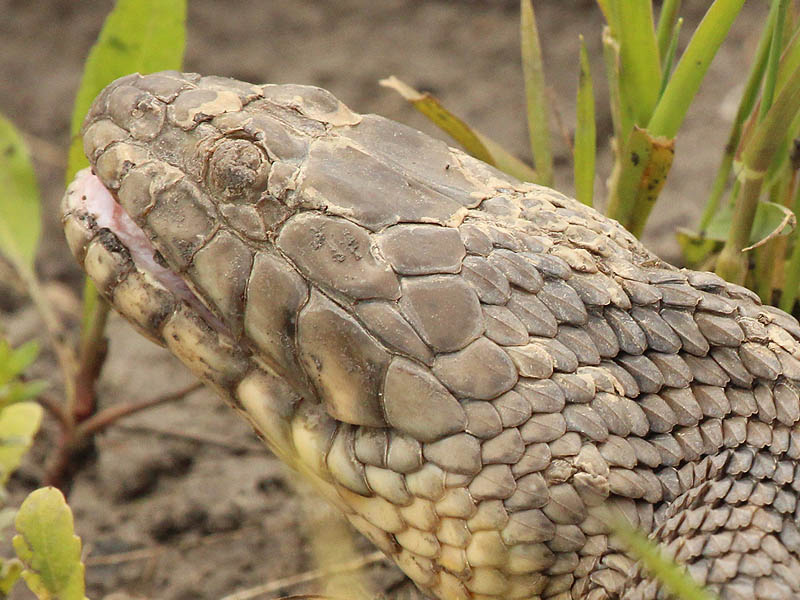This appears to be a Diamond-backed Water Snake in distress. It is a large snake—approaching 4ft/1.2m in length—and something is wrong with its eyes. It’s not clear what. It is possible that something went wrong the last time this snake shed its skin, and the old skin somehow adhered and stayed attached to the snake’s eyes. It is also possible that its eyes are simply covered in dried mud. Whatever the case, the one thing that is certain is that this snake could not see.






Later that afternoon we encountered another Diamond-back Water Snake swimming freely through a small pond. This snake was perfectly healthy and provides a nice contrast to the ailing snake we found earlier. Notice its clear mahogany eyes.









Chris, I remembered hearing about blindness before molting so I looked it up. Apparently this snake is about to molt. Here is a link with more info. http://www.newton.dep.anl.gov/natbltn/600-699/nb642.htm
Hi Kathy, That is a good thought, but it does not appear to me that the rest of the snake is in a pre-molt condition. In other words I don’t see any other indications that the snake is about to shed it skin. But, I’m no expert on this. Maybe someone else will chime in with some additional insight!
-Chris
Chris, when a snake is nearing molt, its body pattern becomes dull for the same reason that eye caps develop. The snake in the photos does appear to be dull compared to an intermolt individual like the other one in your photographs. My thoughts are that it is nearing molt. Snakes are reputed to be blind during this premolt period because of the air under the skin over the eyes.
Captive snakes do occasionally fail to clear the skin from the eyes (the eye caps) during molt, but this snake looks like the skin is intact but dull in pattern.
Congratulations on this find of a premolt water snake. Nice series of photos.
Another point regarding the condition of this snake. The patchy appearance on the head is also an indication of a premolt condition.
Yep. You can definitely see the difference in the vividness of the pattern on this guy vs the one in the water. Pre-molt is likely the answer, with a little bit of died mud thrown in for good measure.
There you go, Kathy! You had it right.
-Chris